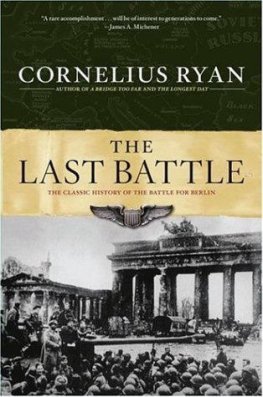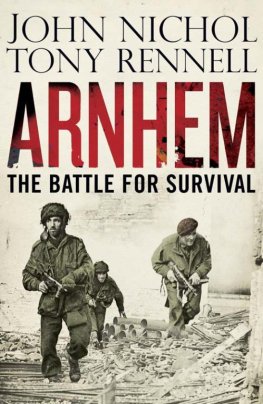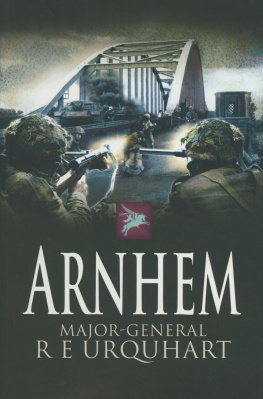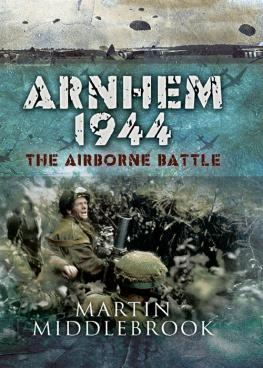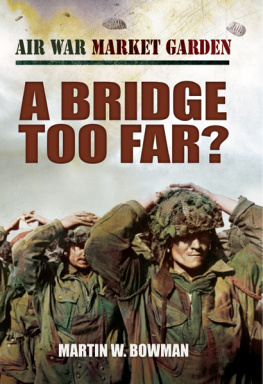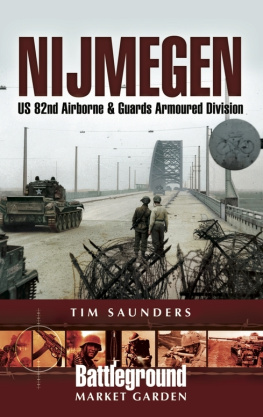
BY CORNELIUS RYAN
A BRIDGE TOO FAR 1974
THE LAST BATTLE 1966
THE LONGEST DAY 1959



SIMON & SCHUSTER PAPERBACKS
Rockefeller Center
1230 Avenue of the Americas
New York, NY 10020
www.SimonandSchuster.com
Copyright 1974 by Cornelius Ryan
All rights reserved, including the right of reproduction in whole or in part in any form.
First paperback edition 1995
SIMON & SCHUSTER PAPERBACKS and colophon are registered trademarks of Simon & Schuster, Inc.
For information about special discounts for bulk purchases, please contact Simon & Schuster Special Sales: 1-800-456-6798 or business@simonandschuster.com.
Designed by Eve Metz
Manufactured in the United States of America
15 17 19 20 18 16 14
Library of Congress Cataloging-in-Publication Data is available.
ISBN-13:978-0-671-21792-1
ISBN-10: 0-671-21792-5
ISBN-13: 978-0-684-80330-2 (Pbk)
ISBN-10: 0-684-80330-5 (Pbk)
eISBN-13: 978-1-4391-2671-4
FOR THEM ALL
MAPS BY RAFAEL PALACIOS
The photographs in this book are from the collection of the author, who gratefully acknowledges the assistance of the Imperial War Museum in London, the U.S. Department of Defense, the Dutch Historical Military Archives, the Dutch Municipal Archives, and the many individuals who provided photographs of events and themselves.
CONTENTS

FOREWORD
Operation Market-Garden, September 17-24, 1944
PART ONE
The Retreat
PART TWO
The Plan
PART THREE
The Attack
PART FOUR
The Siege
PART FIVE
Der Hexenkessel
On the narrow corridor that would carry the armored drive, there were five major bridges to take. They had to be seized intact by airborne assault. It was the fifth, the crucial bridge over the Lower Rhine at a place called Arnhem, sixty-four miles behind the German lines, that worried Lieutenant General Frederick Browning, Deputy Commander, First Allied Airborne Army. Pointing to the Arnhem bridge on the map he asked, How long will it take the armor to reach us? Field Marshal Montgomery replied briskly, Two days. Still looking at the map, Browning said, We can hold it for four. Then he added, But, sir, I think we might be going a bridge too far.
The final conference at Montgomerys Headquarters on Operation Market-Garden, September 10, 1944, as recalled in Major General Roy E. Urquharts memoirs, Arnhem.
FOREWORD
OPERATION MARKET-GARDEN
September 17-24, 1944
Shortly after 10 A.M. on Sunday, September 17, 1944, from airfields all over southern England the greatest armada of troop-carrying aircraft ever assembled for a single operation took to the air. In this, the 263rd week of World War II, the Supreme Allied Com-mander, General Dwight David Eisenhower, unleashed Market-Garden, one of the most daring and imaginative operations of the war. Surprisingly, Market-Garden, a combined airborne and ground offensive, was authored by one of the most cautious of all the Allied commanders, Field Marshal Bernard Law Montgomery.
Market, the airborne phase of the operation, was monumental: it involved almost five thousand fighters, bombers, transports and more than 2500 gliders. That Sunday afternoon, at exactly 1:30 P.M., in an unprecedented daylight assault, an entire Allied airborne army, complete with vehicles and equipment, began dropping behind the German lines. The target for this bold and historic invasion from the sky: Nazi-occupied Holland.
On the ground, poised along the Dutch-Belgian border, were the Garden forces, massed tank columns of the British Second Army. At 2:35 P.M., preceded by artillery and led by swarms of rocket-firing fighters, the tanks began a dash up the backbone of Holland along a strategic route the paratroopers were already fighting to capture and hold open.
Montgomerys ambitious plan was designed to sprint the troops and tanks through Holland, springboard across the Rhine and into Germany itself. Operation Market-Garden, Montgomery reasoned, was the lightning stroke needed to topple the Third Reich and effect the end of the war in 1944.
Part One
 THE RETREAT
THE RETREAT
IN THE THOUSAND-YEAR-OLD Dutch village of Driel, people listened intently. Even before dawn, restless sleepers woke and lights came on behind shuttered windows. Initially there was only a sense of something unaccountable taking place somewhere beyond the immediate, physical surroundings. Gradually vague impressions took form. In the far distance came a muted, continuous mutter.
Barely audible, but persistent, the sound reached the village in waves. Unable to identify the subtle noise, many listened instinctively for some change in the flow of the nearby Lower Rhine. In Holland, half of which lies below sea level, water is the constant enemy, dikes the major weapon in a never-ending battle that has gone on since before the eleventh century. Driel, sitting in a great bend of the Lower Rhine, southwest of Arnhem, capital of Gelderland, has an ever-present reminder of the struggle. A few hundred yards to the north, protecting the village and the region from the restless 400-yard-wide river, a massive dike, topped by a road, rises at places more than twenty feet high. But this morning the river gave no cause for alarm. The Neder Rijn swept peacefully toward the North Sea at its customary speed of two miles per hour. The sounds reverberating off the stone face of the protective dike came from another, far more ruthless, enemy.
As the sky lightened and the sun began to burn off the mist, the commotion grew louder. From roads due east of Driel the villagerscould clearly hear the sound of traffictraffic that seemed to grow heavier by the minute. Now their uneasiness turned to alarm, for there was no doubt about the identity of the movement: in this fifth year of World War II and after fifty-one months of Nazi occupation, everyone recognized the rumble of German convoys.
Even more alarming was the size of the procession. Some people later recalled that only once before had they heard such a flow of trafficin May, 1940, when the Germans had invaded the Netherlands. At that time, swarming across the Reich frontier ten to fifteen miles from Driel, Hitlers mechanized armies had reached the main highways and spread swiftly throughout the country. Now, over those same roads convoys seemed once more to be moving endlessly.
Strange sounds came from the nearest main roada two-lane highway connecting Arnhem, on the northern bank of the Lower Rhine, with the eighth-century city of Nijmegen, on the broad river Waal, eleven miles to the south. Against the low background throb of engines, people could plainly identify individual noises which seemed curiously out of place in a military convoythe scrape of wagon wheels, the whir of countless bicycles and the slow, unpaced shuffling of feet.
Next page

